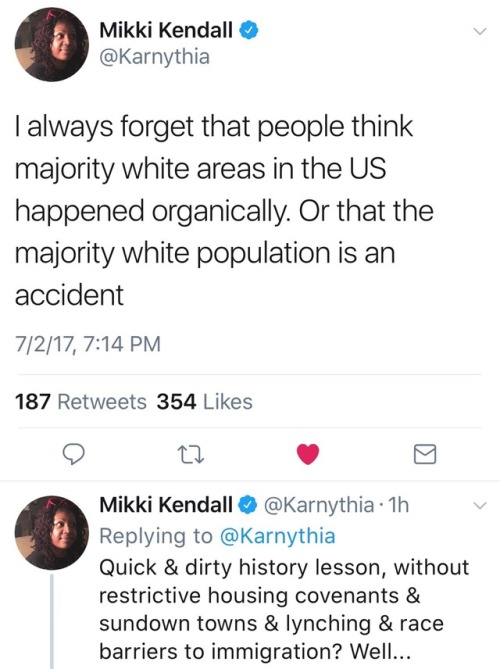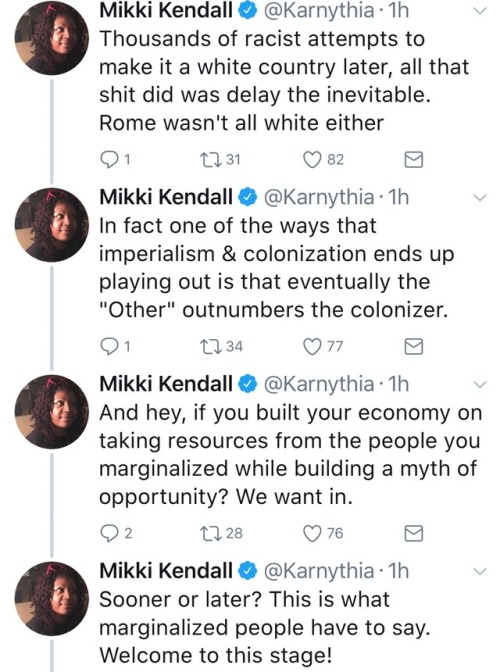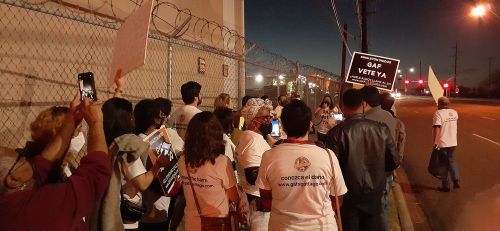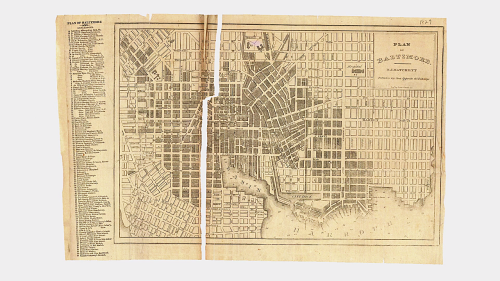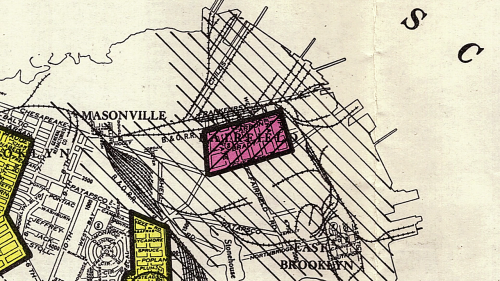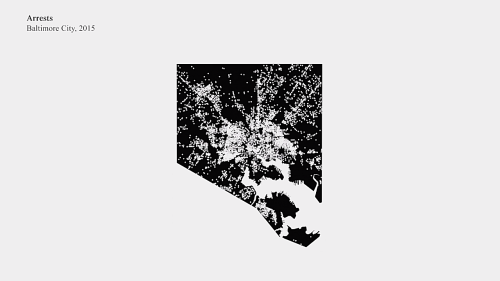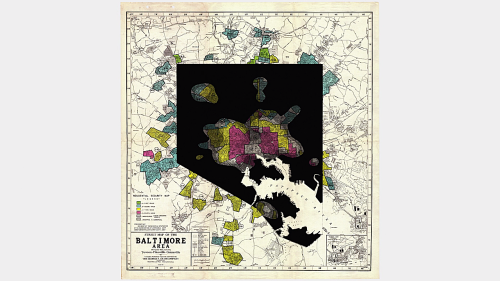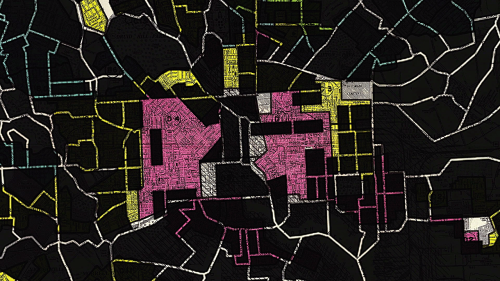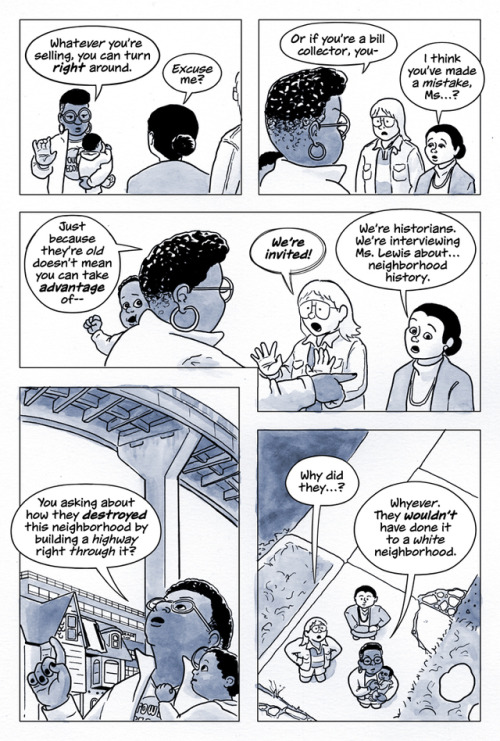#redlining
A short lesson from @karnythia.
I feel like even if this wasn’t a majority white country, white supremacy would still definitely function in a way that preserves itself.
Post link
ENVIRONMENTAL INJUSTICE: In Dallas, the Toxic Legacy of Zoning Lingers
Loose regulations and a gung-ho development culture brought polluting industries in low-income Dallas neighborhoods. Can a new wave of zoning reform drive them out?
See the full story: Patrick Sisson,CITY LAB, March 9, 2022, 11:42 AM EST
Post link
The history of redlining in Baltimore, told through maps in Rat Film (2018, Theo Anthony, dir.)
Post link
Book 1, Page 110
SuperButch is a webcomic by Becky Hawkins and Barry Deutsch about a lesbian superhero in the 1940s who protects the bar scene from corrupt cops. If you’d like to help us make more, please support the SuperButchpatreon or check out our print comics. Thanks!
Post link
This map is probably our most popular one. Students, researchers, and media outlets alike ask to see this map every semester. It is a 1938 Milwaukee County residential security map prepared by Division of Research and Statistics with the co-operation of the Appraisal Department of the Home Owners’ Loan Corporation. It corresponds with a binder filled with notes and information about each section listed. The scale consists of four colors: blue, green, yellow, and red. According to this company, blue and green represented good areas to give loans, and red and yellow represented bad areas to give loans.
Residential security maps are most often called redlining maps, and these maps from 80 years ago show how modern cities are affected by the past. What better example of systemic racism is there than to see mainly non-white communities labeled red on this map?
As one of the most segregated cities (if not the most segregated city) in America, this map shows roots of this problem. When I-43 was built, it was constructed in predominantly black communities. Not only was the interstate built where black people lived but in places where black businesses were successful. All of this I’ve learned from students and researchers who have come into the AGSL to tell this map’s story and its effect on our city today.
Call number: 893-c .M54 E-1938 2015
[Image description: A map of Milwaukee County, Wisconsin, showing different sections of the county in four colors: blue, green, yellow, and red.]
Post link
Book 1, Page 110
SuperButch is a webcomic by Becky Hawkins and Barry Deutsch about a lesbian superhero in the 1940s who protects the bar scene from corrupt cops. If you’d like to help us make more, please support the SuperButchpatreon or check out our print comics. Thanks!
Post link
White people say it all the time:

“Black people have all Black colleges, why can’t we have all white universities?”
“Asians have Chinatown, what about a Whitetown?”
The idea of racial exclusion is an interesting concept but it’s also one that people misunderstand. In many ways, one can argue that EVERY ethnic group practices exclusion. However, not all types of exclusion are the same.
In a nutshell, the goal of racial exclusion is quite simple: preservation. To preserve one’s culture, community, resources, and members. Creating ethnic boundaries allows you to siphon off what’s yours and what’s mine, what I worked for and what you worked for. These are my local businesses, those are your neighborhood delis. You eat there, I’ll eat here. So long as we don’t cross paths or go into each other’s neighborhoods we’re good, right?
Not quite.

The difference between racial exclusion among ethnic minorities vs. white communities is subtle, but very potent. Let’s take a few examples.
Why are Asian-Americans racially exclusive?

Simple: most Asian-Americans are first or second generation immigrants, so racial preservation functions as a way to bring back “the old country.” Inside these enclaves, we can speak our native language, eat our “smelly Asian food” and talk about topics that relate to our shared immigrant struggle. It’s comforting and for once, we don’t have to feel like an outsider. We don’t have to feel like “the Asian guy.” In this side of town, we’re just “the guy.”
Why are Black communities exclusive?

Black exclusion is a way for Black folks to finally get what they deserve: a piece of equality that can’t be found when it’s run by non-black folks. From racist, Asian-owned beauty stores to white-owned Fortune 500 companies, as a Black person, it’s easy to be overlooked and cast under the shade of anti-blackness. But through the magic of Black exclusion (or Black owned), you can buy hair products at a decent price (without the racist, Asian cashier following them around) or get your Doctorate from an HBCU without having to deal with bigoted academic advisors accusing you of harassment.
Now, here’s where White exclusion differs:

White exclusion is just as much about keeping whiteness IN as it is about keeping non-whites OUT. What do I mean? Well, if you’re a white person, you CAN come into our ethnic communities, move into a Chinatown apartment, or join the Asian-American math club. However, as a person of color, you CAN’T enter predominantly White communities in the same way.
There are thousands upon thousands of businesses, cities, neighborhoods, restaurants, health clinics, universities, production companies and entire industries that lack any semblance of diversity - from congress, law enforcement, to the management team at your Wal-Mart. And guess what? They have every intention to keep it that way. Hell, not even Nat King Cole could avoid the effects of White exclusion. After purchasing a home in an all white neighborhood in the 1950s, six KKK members burned a cross on his lawn as a welcoming present.
”What about Black colleges? Why are HBCUs allowed to accept only Black people?!”
Ummm, can you NOT? Look, dumbass: HBCUs are HISTORICALLY Black, not exclusively Black. So technically, the Lee Wang and Tyler McBrusselChowders of the country can and do apply to Morehouse College just as easily as their Black counterparts - they just choose not to. As for the POCs joining predominantly white schools?
HELL.
FUCKING.
NO!
On the opposite end of the spectrum, you will find no shortage of all-white elementary schools. You’ll have an all black, poor kindergarten on one side of the bridge and a well-funded, all-white public school on the other. How? They draw in racially exclusive school zones to push out Black families.

Bottom line: White exclusion IS about short handing ethnic minorities whereas Black/Asian/Latino exclusion has always been about salvaging the scraps in order to create livable situations. Minority exclusion isn’t taking away from White folks whereas white exclusion does (limited government funding, limited job opportunities, limited housing options, limited representation in the media, limited representation in politics, etc.) One form is exclusive as a means of survival, the other as a means of oppression.
It’s like if one kid had two cookies and another have nine thousand, and the kid with nine thousand said, “But moooom!! The other girl isn’t sharing with me! I already have him two of mine!”
BRO, do you even logic?

